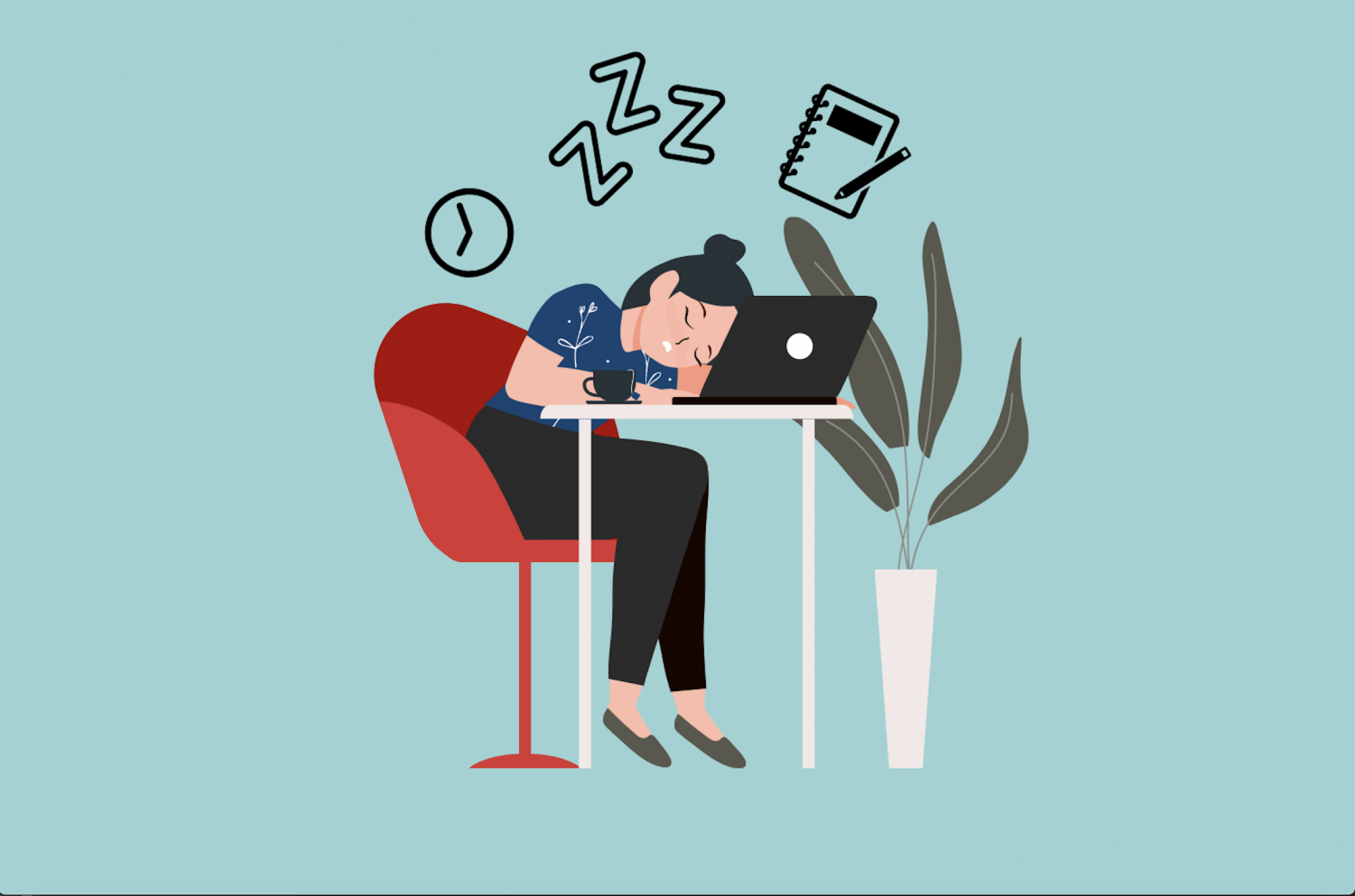 Recently, I was talking with two of my friends about making new friends and meeting up with old ones. We thought about how some people take energy from us and some people give us energy. Sometimes when I hang out with people, I feel rejuvenated because of our laughter, our conversations or from a meal we share. I go home happy, and, in a way, well-rested. On the other hand, sometimes hanging out with people leaves me feeling as though I used up all of my energy to be present with them—even if I did enjoy myself—and I can feel tired from the social interaction. Similar to in-person social situations, this year I learned how interactive and exhausting Zoom can be as well.
Recently, I was talking with two of my friends about making new friends and meeting up with old ones. We thought about how some people take energy from us and some people give us energy. Sometimes when I hang out with people, I feel rejuvenated because of our laughter, our conversations or from a meal we share. I go home happy, and, in a way, well-rested. On the other hand, sometimes hanging out with people leaves me feeling as though I used up all of my energy to be present with them—even if I did enjoy myself—and I can feel tired from the social interaction. Similar to in-person social situations, this year I learned how interactive and exhausting Zoom can be as well.
As we’ve all started to use Zoom more frequently, the phenomenon of Zoom fatigue has also become more common. I’m someone who’s never really been concerned with my appearance (I’m all about comfy sweatpants and hoodies). However, Zoom has made me hyper aware of what I look like as I have to stare at my own face for hours throughout the day. Instead of making eye contact with the speaker, as I would in-person, I look at myself instead. I look at myself so frequently because I want to check my eyes are level to the camera, and I have also become more aware of the slight facial expressions I make that I don’t always like. I notice the way my mouth moves when I speak or the way my eye twitches when a particle of dust floats into it. It’s disconcerting to see all these little gestures I’ve never had to see before. As an introvert, I never want to be the center of attention; however, having my face constantly in my field of vision creates this feeling that I am the center of attention, that people are watching me, and that is tiring.
Constantly staring at a reflection of myself is definitely one part of my Zoom fatigue. Another part is the enormous amount of screen use. In addition to my school-related time on Zoom, some of my favorite ways to relax always involve a screen—like watching TV, for example. As a result, I’m literally staring at a screen for hours on end. That takes a toll on my eyes and on my levels of exhaustion.
The last component of my Zoom fatigue combines both of the aforementioned parts. Zoom is one of the few ways to have social activities in a safe manner right now. Along with classes, I have Zoom meetings to attend clubs, to talk with friends from home, to meet new people and to watch important speakers give lectures. In these online gatherings, I’m forced to engage myself rather than being engaged. Although the subject of the meeting might be interesting, there are plenty of distractors around me which require less effort to engage like my phone, where I can control what I’m doing, or a book, full of promising adventures. However, what I have to do is stare directly into my camera to make sure the other people on the call know I am paying attention and willing to participate. Zoom meetings already take a considerable amount of energy from me after being in classes for hours, but since my social life is also confined to Zoom or even FaceTime and texting, it then requires even more energy being taken from me and poured into a computer screen.
As with many things in life, balance is key. Just as I sometimes need a day where I’m completely alone to recharge, sometimes I need a day with less Zoom use. There are many extra Zoom meetings I’m not required to attend. While I try my best to make it to most of these meetings, I’ll choose to take a rest day and catch up next week if I’m particularly tired. Zoom doesn’t require physical in-person interactions, but it’s still a form of interaction that takes energy. It’s important to listen to our bodies and prioritize self-care.
Some Zoom meetings will allow me to turn my camera off. At least then I don’t have to stare at myself for another hour, and I feel as though I have a bit of a break. Somebody once told me to try putting Zoom in speaker mode so that I’m just a small square to the side, and I can then make eye contact with the person speaking. This advice didn’t really work out for me, unless I was in a lecture, because I didn’t like how the screen would jump around to the next active speaker. However, it might work for some of my fellow introverts, so I implore others to try it too.
Yet, there are times when there’s no escaping the fact that some Zoom meetings will require the camera to be on and that I am fully engaged in a discussion. After an especially taxing day on Zoom, usually where I had my camera on for most of the day, I absolutely need a break away from the computer screen. In that case, I try to go outside for an extended period of time without any particular goal. I go on long walks or runs, or I just sit outside and enjoy the sun. As most of my friends know, I am in love with the sunset. I’ll go outside just to take pictures of the sunset and watch its glow pass over the trees and the buildings. I take in fresh air, so I can take a break. I usually do this alone or with just a couple of other people I feel comfortable with so that I can focus on relaxation rather than socialization. Overall, the point is to take a moment away from the screens if only for a little bit to feel rejuvenated.
At the end of the day, being on Zoom so frequently has truly shown me how I want to make sure I have a balance between people and things that both take and give energy. With Zoom, the hope is that we all have daily outlets that provide more energy received than the energy we inevitably give away as college students living through a pandemic. Introvert or not, it’s important to remain connected to the real world outside of our little virtual one.





